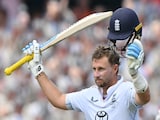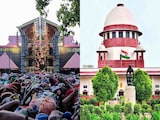Male breast cancer is a rare form of cancer that develops in the breast tissue of men. Although men have less breast tissue than women, they can still develop breast cancer, particularly in the small amount of tissue located behind the nipples. While breast cancer is much more common in women, men can also be affected, usually later in life, often around the age of 60 or older. Due to its rarity, male breast cancer is often diagnosed at a later stage, which can make treatment more challenging. In this article, we share a list of causes, signs and prevention tips for male breast cancer.
Causes
The exact causes of male breast cancer are not fully understood, but several factors increase the risk:
- As with most cancers, the risk of developing breast cancer increases with age, typically affecting men over 60.
- Inherited mutations in genes like BRCA1 and BRCA2 significantly increase the risk of breast cancer in men.
- Men with close relatives (male or female) who have had breast cancer are at a higher risk.
- Prior exposure to radiation, particularly to the chest area, can increase the risk.
- Conditions that result in higher levels of oestrogen, such as Klinefelter syndrome or liver diseases like cirrhosis, may increase the likelihood of male breast cancer.
- Excess fat tissue can increase oestrogen levels in men, potentially elevating the risk.
- Conditions like undescended testicles or testicular injury may also contribute to a higher risk.
- Heavy alcohol use can lead to hormonal imbalances and increase cancer risk.
Signs
Early signs of male breast cancer are often subtle but should not be ignored. Common symptoms include:
- The most common sign is a painless lump or thickening in the breast tissue, usually near the nipple.
- This may include nipple retraction (the nipple turning inward), redness, scaling, or discharge (sometimes bloody).
- The skin around the breast may become dimpled, red, or develop a rash or sores.
- This could be a sign of swollen lymph nodes, indicating that the cancer may have spread.
Prevention tips
Although male breast cancer cannot always be prevented, several steps can reduce the risk:
- Reducing excess body fat can lower oestrogen levels, decreasing the risk of hormone-related cancers.
- Keeping alcohol intake in moderation can help maintain hormonal balance and reduce cancer risk.
- Men with a family history of breast cancer or BRCA gene mutations should consider genetic counselling and screening for early detection.
- Men, particularly those with risk factors, should perform regular self-exams and consult a healthcare professional for any unusual lumps or changes in the breast.
- Limit the use of oestrogen-based treatments unless prescribed by a healthcare provider.
Male breast cancer is rare but serious. Awareness of the risk factors, early detection, and understanding treatment options can help manage and treat the disease effectively. Regular self-exams, maintaining a healthy lifestyle, and consulting healthcare professionals for any suspicious signs are crucial for reducing the risk and improving outcomes in male breast cancer cases.
Disclaimer: This content including advice provides generic information only. It is in no way a substitute for a qualified medical opinion. Always consult a specialist or your own doctor for more information. NDTV does not claim responsibility for this information.
References
Epidemiology of male breast cancer. National Center for Biotechnology Information (NCBI/PMC), 2020.
Male breast cancer: clinical presentation, diagnosis and treatment. NCBI/PMC, 2016.
Male Breast Cancer, NCBI Bookshelf, 2023.
Epidemiology, Risk Factors, Classification. NCBI, 2017.
Male breast cancer: a disease distinct from female breast cancer. NCBI, 2020.















